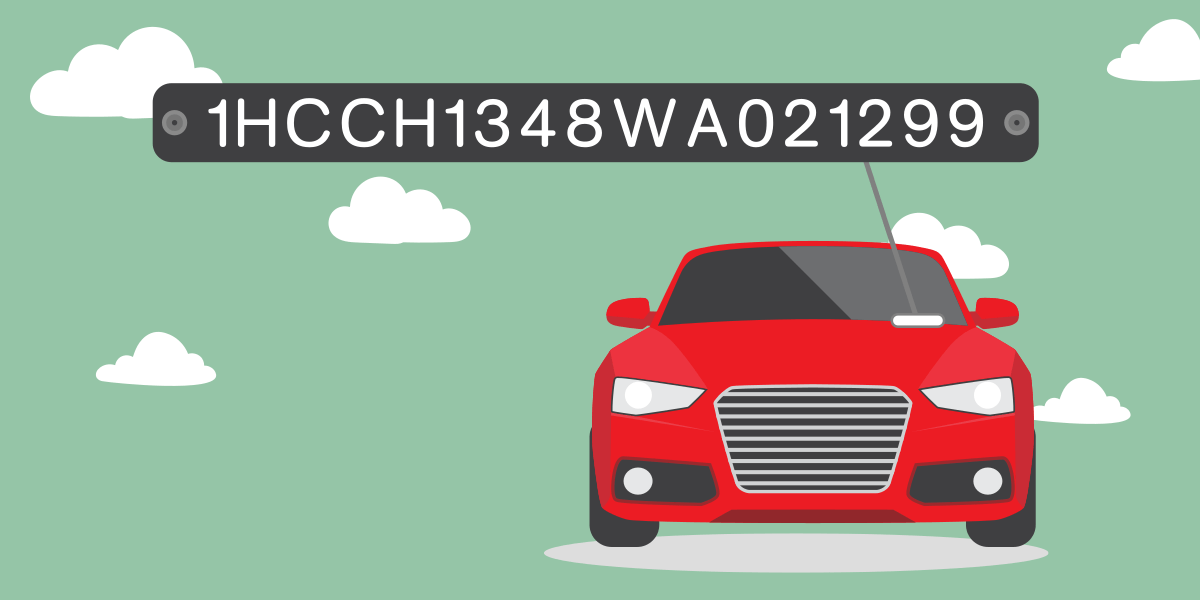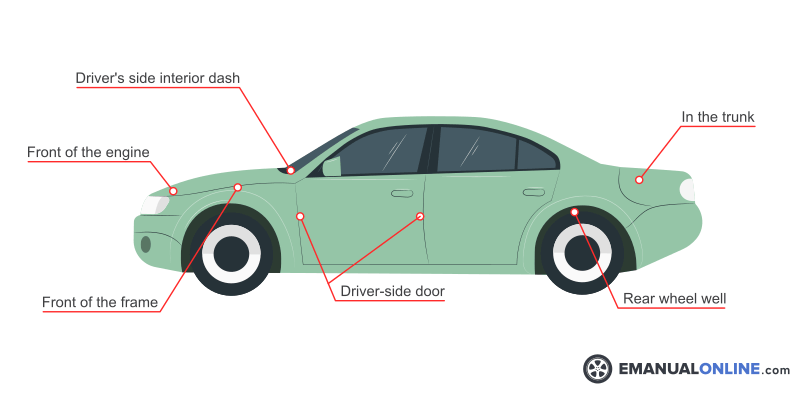
VIN stands for Vehicle Identification Number. It consists of 17 alphanumeric digits. As the name suggests, a VIN is a unique identifier number for every vehicle. This number is assigned by automobile manufacturers and every vehicle has its own unique VIN. It includes vital information about a vehicle such as the make and model of the vehicle, engine size, airbag type, vehicle type, country of origin, manufacturing plant name, and trim level.
Since the early 1980s, the U. S department of transportation has made it mandatory for every vehicle to be stamped with a VIN. Due to this, the 17-digit VINs have become a standard for the vehicles. However, vehicles manufactured before 1980 do not always have a 17-digit VIN. Their vehicle identification number may vary from 5 to 13 digits.
Apart from the information related to a vehicle, a VIN also includes a mathematical formula that is used to check whether a VIN is authentic or not. This mathematical formula is known as a check digit. The VIN is a great tool to track recalls, thefts, vehicle registrations, warranty claims as well as insurance coverage of a vehicle. This checking process is super easy. All you need to do is enter the Vehicle identification number in this VIN checker free tool and that’s it. This free search tool is provided by the National Highway Traffic Safety Administration which makes it pretty reliable.
What does a VIN look like?
A vehicle ID number consists of 17 characters and all these characters have a specific purpose. These characters are a combination of letters and numbers. However, to avoid confusion with 1 and 0, vehicle identification numbers don't use the letters Q, O, and I.
A typical VIN for a 1997 Honda Accord EX should look like this: 1HCCH1348WA021299
Where can I find a VIN on my vehicle?
There are different places on your vehicle where you can find the vehicle ID number. It depends on the manufacturer. Some manufacturers stamp VIN on VIN plates whereas, some may stamp it on more than one place. Customers also have the option to get it stamped in more than one place.

Here are the most common places where you can find a VIN:
- The most common location where a VIN is printed in the dashboard of your vehicle. It is the area where the dashboard is connected with the windshield on the driver’s side.
- Another most common place where you can find VIN on your vehicle is the inside part of your vehicle’s driver's door jam. It is near the handle.
- You can also find a VIN in the engine compartment of your vehicle.
- In some older vehicles, it is printed on the steering column.
- VIN may also be printed under the spare tire or on the bumpers of your vehicle.
- You can also find it on the inside of your vehicle’s engine and frame or the glass.
- Apart from the above-mentioned areas, you can also find VIN on the paperwork of your vehicle. Your insurance and registration card also include the details of VIN.
Decoding The VIN
The format of VIN is globally recognized and by decoding the VIN, vital information about the vehicle can be obtained. Every auto manufacturer is required to print a VIN on their vehicles. This VIN on the car enables us to get detailed information about the car.

Here is how VIN can be decoded by characters:
- The first character of the VIN represents the country where the vehicle was manufactured. For example, 2 represents Canada, 3 represents Mexico whereas, J represents Japan. Similarly, 1 or 4 represents the US, S represents England, W represents Germany and K represents Korea.
- The second character of the VIN represents the manufacturing company. For example, A represents Audi, G represents General Motors, D represents Mercedes Benz and B represents BMW. Similarly, H represents Honda, N represents Nissan and F represents Ford.
- The third character represents the manufacturing division of the vehicle.
- Characters from 4th to 8th represent different attributes of the vehicle such as engine type, airbag type, etc.
- The 9th character is the check digit of the vehicle.
- The 10th character of VIN shows the model year of a vehicle.
- The 11th character of the VIN represents the assembly plant of the vehicle.
- Characters from 12th to 17th shows the serial number of a vehicle.
There are many online VIN lookup and VIN check tools that help in the decoding of a VIN. A VIN decoder allows us to check whether a vehicle was illegally modified or stolen. It also provides information related to accidents and odometer reading. This is quite useful when it comes to buying used vehicles.
In short, it is a great tool to assess the market value of a vehicle.
When is a VIN Helpful?
VIN can give you a lot of information about a vehicle and this is why a VIN can be really helpful especially when you’re looking for a used vehicle.
Safety first
For example, you want to buy a used car and a dealer showed you a used car in very good condition. He told you about all the plus points of the vehicle including the fact that this vehicle also includes a passenger-side airbag. However, when you cross-check the facts by decoding the VIN by yourself or by using a VIN lookup tool, you can get to know that the vehicle only has a driver-side airbag.
Apart from this, you can also get more information related to your potential ride from companies like CARFAX. They allow you to cross-check a vehicle’s ID number. Even though you may not get all the information but you will still get an idea of whether it's safe to buy this vehicle or not. In this way, you can make a better purchase decision.
VIN is just like the social security number. It is unique for every vehicle and if anything is reported about the car to law enforcement agencies or insurance companies, it will be done by using the vehicle’s ID number. Whenever you are planning to buy a used car, always get a detailed history of that vehicle. Apart from this, you should also get the vehicle inspected so that you know if there’s anything wrong with the vehicle and whether any insurance claims have been made through its VIN or not.
Other uses
Another use for your car's vehicle identification number is when ordering aftermarket parts. It's not uncommon for manufacturers to change a specific part with another on the same car model. Sometimes it's to correct a specific recurrent problem while other times it's because of a change in the supplier chain. For example, the wiper motor might be different on a 98 Honda Civic than on a 99 model, even though the car is the same. When you need to order a wiper motor for that car, the part store clerk might ask you for the 10th digit of your VIN to find the right part for you. Whenever you schedule an appointment to replace spark plugs, for example, the service advisor might also ask for your VIN for the same reason.
The best thing about VIN lookup tools and VIN decoders is that they are quite easy to use. All you need to do is just enter the VIN in the system and you’ll get all the necessary information you need.
Always keep in mind that no matter how much a seller tries to convince you, never buy a vehicle without a VIN because VIN ensures that your vehicle is safe.
Even if you are planning to get insurance on your vehicle, you’ll still need your VIN for that. It is also required for manufacturer recalls or for making warranty claims for your vehicle. Apart from this, if you are planning to sell your vehicle, your VIN will still be very helpful because it will save you from many potential problems.
